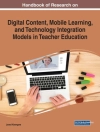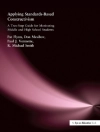The New Latino Studies Reader is designed as a contemporary, updated, multifaceted collection of writings that bring to force the exciting, necessary scholarship of the last decades. Its aim is to introduce a new generation of students to a wide-ranging set of essays that helps them gain a truer understanding of what it’s like to be a Latino in the United States.
With the reader, students explore the sociohistorical formation of Latinos as a distinct panethnic group in the United States, delving into issues of class formation; social stratification; racial, gender, and sexual identities; and politics and cultural production. And while other readers now in print may discuss Mexican Americans, Puerto Ricans, Cubans and Central Americans as distinct groups with unique experiences, this text explores both the commonalities and the differences that structure the experiences of Latino Americans. Timely, thorough, and thought-provoking,
The New Latino Studies Reader provides a genuine view of the Latino experience as a whole.
Daftar Isi
Figures and Tables
Introduction
PART 1: HISPANICS, LATINOS, CHICANOS, BORICUAS: WHAT DO NAMES MEAN?
1. What’s in a Name? – Ramon A. Gutierrez
2. (Re)constructing Latinidad – Frances R. Aparicio
3. Celia’s Shoes – Frances Negron-Muntaner
PART 2: THE ORIGINS OF LATINOS IN THE UNITED STATES
4. The Latino Crucible – Ramon A. Gutierrez
5. A Historic Overview of Latino Immigration and the Demographic Transformation of the United States – David G. Gutierrez
6. Late-Twentieth-Century Immigration and U.S. Foreign Policy – Lillian Guerra
PART 3: THE CONUNDRUMS OF RACE
7. Neither White nor Black – Jorge Duany
8. Hair Race-ing – Ginetta E. B. Candelario
9. Race, Racialization, and Latino Populations in the United States – Tomas Almaguer
PART 4: WORK AND LIFE CHANCES
10. Mexicans’ Quotidian Struggles with Migration and Poverty – Patricia Zavella
11. Economies of Dignity – Nicholas de Genova and Ana Y. Ramos-Zayas
12. Not So Golden? – Manuel Pastor Jr.
PART 5: CLASS, GENERATION, AND ASSIMILATION
13. Latino Lives – Luis Ricardo Fraga et al.
14. Generations of Exclusion – Edward Telles and Vilma Ortiz
15. Latinos in the Power Elite – Richard L. Zweigenhaft and G. William Domhoff
16. Postscript – Richard L. Zweigenhaft and G. William Domhoff
PART 6: GENDER AND SEXUALITIES
17. A History of Latina/o Sexualities – Ramon A. Gutierrez
18. Gender Strategies, Settlement, and Transnational Life in the First Generation – Robert Courtney Smith
19. “She’s Old School like That” – Lorena Garcia
20. Longing and Same-Sex Desire among Mexican Men – Tomas Almaguer
PART 7: LATINO POLITICS
21. Latina/o Politics and Participation – Lisa Garcia Bedolla
22. Young Latinos in an Aging American Society – David E. Hayes-Bautista, Werner Schink, and Jorge Chapa
23. Afterword – David E. Hayes-Bautista, Werner Schink, and Jorge Chapa
24. Life after Prison for Hispanics – Martin Guevara Urbina
25. Climate of Fear – Southern Poverty Law Center
26. What Explains the Immigrant Rights Marches of 2006? – Pierrette Hondagneu-Sotelo and Angelica Salas
27. Wet Foot, Dry Foot . . . Wrong Foot – Ann Louise Bardach
Contributors
Credits
Index
Tentang Penulis
Ramón A. Gutiérrez is Preston and Sterling Morton Distinguished Service Professor at the University of Chicago and the author of When Jesus Came the Corn Mothers Went Away: Marriage, Sexuality, and Power in New Mexico, 1500–1846. Tomás Almaguer is Professor of Ethnic Studies and former Dean of the College of Ethnic Studies at San Francisco State University and the author of Racial Fault Lines: The Historical Origins of White Supremacy in California.












